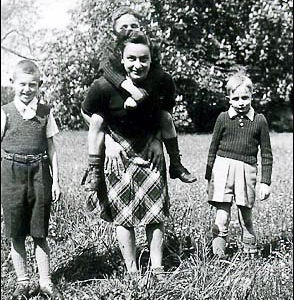As a young boy growing up in Holland during the mid-1960s, I was introduced to Anne Frank and her tragic story. We were required to read her diary as well as attending the all-day field trip to the “Anne Frank House” in Amsterdam where Anne and her family hid from the Nazis until they were betrayed and deported ⏤ only her father survived.
There is a similar story in France, but it did not become known until 2008 when another diary was published, and the world got a first-hand glimpse into Nazi atrocities. The author, Hélène Berr, has since become known as the “French Anne Frank.”

Did You Know?
Do you know how the term “Nazi” came about? Hitler’s political party was officially called the National Socialist German Workers’ Party or, Nationalsozialistische Deutsche Arbeiterpartei:
NAtionalsoZIalistische Deutsche Arbeiterpartei.
The German word “Reich” means “empire.” The first German Reich lasted 844 years and was commonly known as the Holy Roman Empire until it was dismantled by Napoléon in 1806. The second Reich lasted approximately 48 years between 1871 and the end of World War I. Hitler’s Third Reich lasted twelve years with horrifying consequences which unfortunately, some aspects have endured to this day.
Hélène Berr (1921-1945) was born into an upper middle-class French family. In addition to Hélène, Raymond and Antoinette Berr’s family consisted of Jacqueline (1915-1921), Yvonne (1917-2001), Denise (1919-2011) and Jacques (1922-1998). The family lived in Paris at 5, avenue Elisée-Reclus until the French police knocked on their door in March 1944.
Hélène began her diary on 7 April 1942. She ceased writing seven months later on 28 November 1942 but resumed once again on 25 August 1943. There are many entries which document the actions and events perpetrated by Vichy and the Nazis in Paris and France. Reading her diary, you will confront Hélène’s emotions towards the policies of Vichy and the Nazis as well as personal issues. Unlike Anne Frank, we won’t hear from Hélène until 2008 when her diary is published. Read More The French Anne Frank
